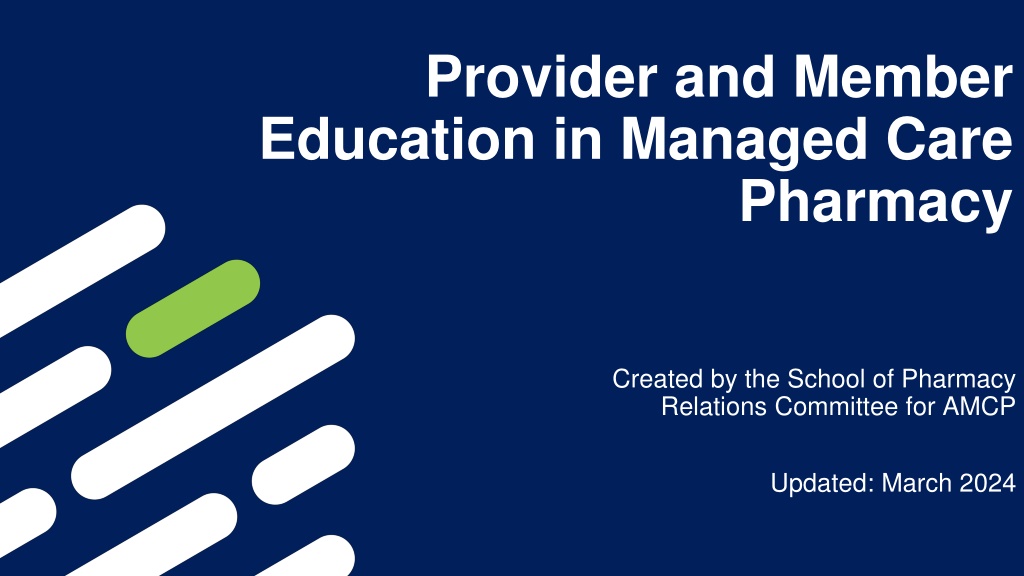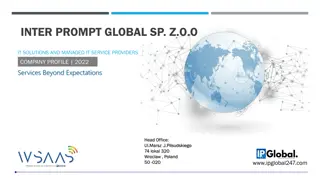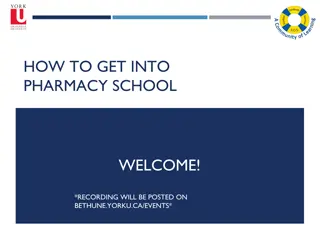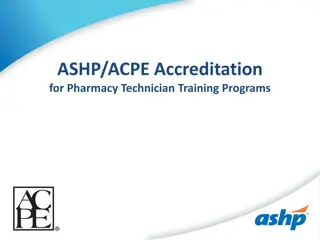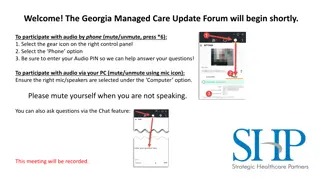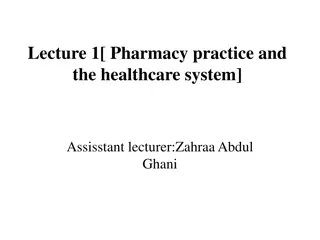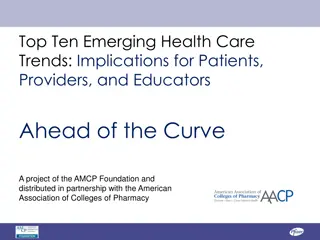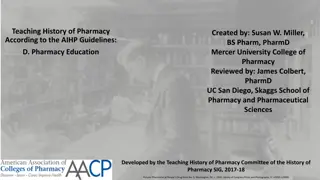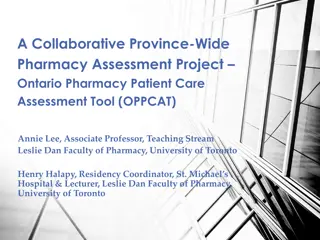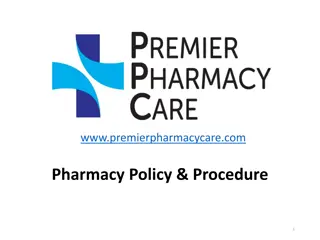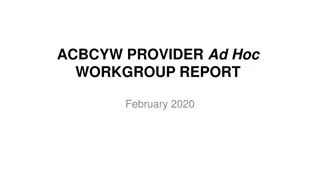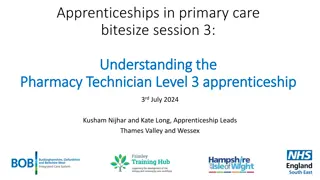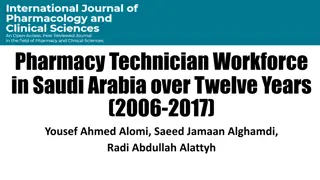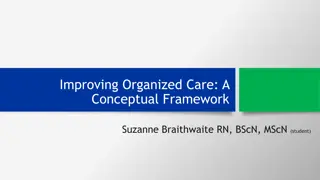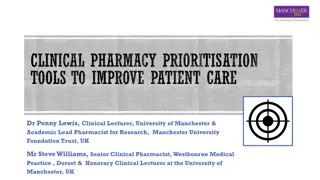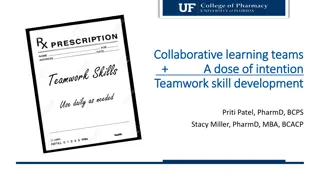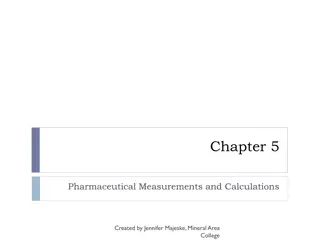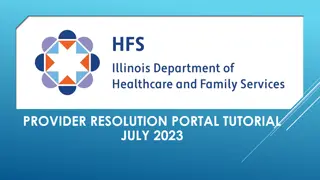Provider & Member Education in Managed Care Pharmacy
This resource delves into strategies, considerations, benefits, and the pharmacist's role in education programs related to managed care pharmacy. It covers goals, motivating factors for providers and members, different types of education, and more.
Download Presentation

Please find below an Image/Link to download the presentation.
The content on the website is provided AS IS for your information and personal use only. It may not be sold, licensed, or shared on other websites without obtaining consent from the author.If you encounter any issues during the download, it is possible that the publisher has removed the file from their server.
You are allowed to download the files provided on this website for personal or commercial use, subject to the condition that they are used lawfully. All files are the property of their respective owners.
The content on the website is provided AS IS for your information and personal use only. It may not be sold, licensed, or shared on other websites without obtaining consent from the author.
E N D
Presentation Transcript
Provider and Member Education in Managed Care Pharmacy Created by the School of Pharmacy Relations Committee for AMCP Updated: March 2024
Objectives Describe strategies used in provider and member education related to managed care pharmacy Discuss important considerations in education Describe the benefits and role of the pharmacist in provider and member education programs
Provider Education Goals Enhance knowledge Change behavior & culture Promote best practices
Motivating Factors for Providers Improve quality of care Increase positive outcomes Reduce adverse events Avoid organizational penalties Maintain prestige among colleagues and desire for achievement and advancement Respond to patient demands Increase potential revenue through value based contracting Collaborate within an inter-professional team Understand members covered benefits to reduce administration burden/unnecessary work
Provider Education Types Content Newsletters Administrative policies updates Formularies New products/pipeline agents Seminars New treatment guidelines or protocols Web-based tools/webinars Academic detailing Results from utilization audits Report cards (utilization audits) Patient-specific utilization patterns and history Letter campaigns Provider Handbooks Links to important resources Handouts/flyers
Member Education Goals Improve health and preventative health behaviors Increase awareness of benefit and cost structure Enhance member satisfaction
Motivating Factors for Members Decreased out of pocket costs Self care education Empowerment in maintenance of personal health Realization of disease control Support systems Incentives for self care Understanding of their covered benefits
Member Education Types Content Drug information (benefits of therapy, adverse events, formulary status, etc) Preventative health behaviors Mailings & phone calls Seminars or individual appointments MTM programs Tools for medication adherence Disease management programs Cost savings tips Pay-for performance incentives
Important Considerations Who is your audience for education initiative? What are your education/intervention goals? Who are your stakeholders and what is meaningful to them? Plan Perform outreach/education/intervention Do Engage stakeholders to determine what was meaningful What did you learn during the intervention/education that would make your outreach/education more meaningful? Check Determine what changes need to be made in education approach Implement changes and repeat cycle of education continuum Adjust
Additional Considerations Health literacy Format Content Focus groups Gather input from audiences through surveys or discussions Incorporate feedback to make programs more meaningful
Pharmacist Role in Education Types Content Mailings & phone calls Drug information expertise Preventative health education Seminars or individual patient and provider appointments Medication Adherence tools MTM programs Cost savings tips and formulary alternative recommendations Disease management programs Provider detailing Quality Initiative implementation Drug Use Evaluations Case Management Team member
Education Role of a Pharmacist Pharmacists are accessible Patients trust information provided Providers value input from a member of the healthcare team (i.e. medical home)
Summary Provider and member education enhances knowledge and changes behavior Educational programs help maintain high quality of care Educational programs help reduce overall health care costs
Mission & Vision To improve patient health by ensuring access to high-quality, cost-effective medications and other therapies.
Thank you to Michelle Aslami and AMCP SOPRC members for updating this presentation.
